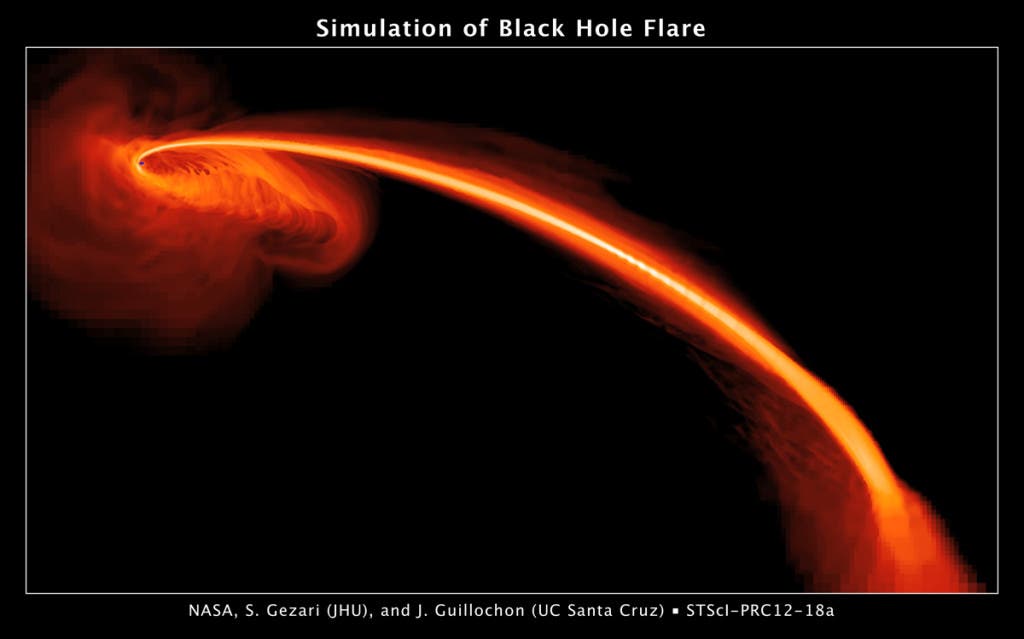In a distant galaxy, 2.7 billion light years away, a supermassive black hole, thousands of times more massive than our own sun, despicably swallowed a star, slowly engulfing it with no trace to be found afterwards; and the black hole would’ve gotten away with it, if it weren’t for that meddling NASA and those pesky Galaxy Evolution Explorer and the Pan-STARRS telescope in Hawaii.
This is the first time astronomers have managed to catch a black hole “red handed” in the act of devouring a star, a helium gas rich star, to be more precise. The team of researchers, lead by Suvi Gezari, an astronomer at Johns Hopkins University, monitored hundreds of thousands of galaxies in ultraviolet light with the space-based Galaxy Evolution Explorer (GALEX) and in visible light with the Hawaii-based Pan-STARRS telescope, just to find such an event in live action. Black holes typically devour a star once every 10,000 years or so, thus a broad survey spectrum is needed.
“When the star is ripped apart by the gravitational forces of the black hole, some part of the star’s remains falls into the black hole while the rest is ejected at high speeds,” says Suvi Gezari of the Johns Hopkins University.
“We are seeing the glow from the stellar gas falling into the black hole over time. We’re also witnessing the spectral signature of the ejected gas, which we find to be mostly helium. It is like we are gathering evidence from a crime scene. Because there is very little hydrogen and mostly helium in the gas, we detect from the carnage that the slaughtered star had to have been the helium-rich core of a stripped star.”
The observations will most likely help astronomers and astrophysicists better understand the mechanisms that underline black holes, in an attempt to decipher some of the secrets of this, yet, mysterious cosmic object. The scientists detailed their findings online today (May 2) in the journal Nature. Below is a video simulation of the cosmic crime.



